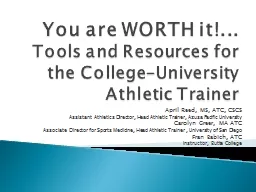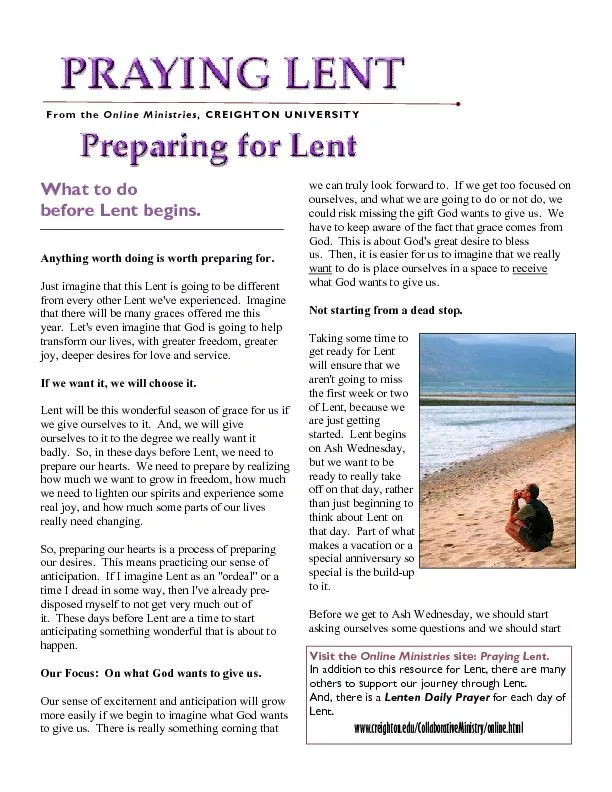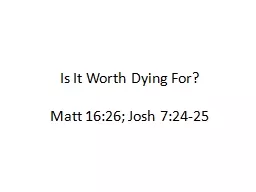PPT-You are WORTH it!...
Author : mitsue-stanley | Published Date : 2020-01-08
You are WORTH it Tools and Resources for the CollegeUniversity Athletic Trainer April Reed MS ATC CSCS Assistant Athletics Director Head Athletic Trainer Azusa Pacific
Presentation Embed Code
Download Presentation
Download Presentation The PPT/PDF document "You are WORTH it!..." is the property of its rightful owner. Permission is granted to download and print the materials on this website for personal, non-commercial use only, and to display it on your personal computer provided you do not modify the materials and that you retain all copyright notices contained in the materials. By downloading content from our website, you accept the terms of this agreement.
You are WORTH it!...: Transcript
Download Rules Of Document
"You are WORTH it!..."The content belongs to its owner. You may download and print it for personal use, without modification, and keep all copyright notices. By downloading, you agree to these terms.
Related Documents














